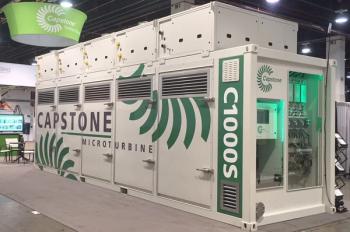
ENSURING CRITICAL MACHINERY EXCELLENCE, PART III
BEFORE NOT AFTER: THE FIELD MONITORING PHASE
Michael and William Forsthoffer
This is the third and final article in our Ensuring Critical Machinery Excellence Series - Before Not After. It is important that the steps outlined in this series are accomplished early in the process to prevent unscheduled shutdowns and failures.
After critical machinery is successfully tested (Part II in the Turbomachinery International Handbook 2017) and installed on site, the final phase is to establish an effective monitoring program.
Condition monitoring should be done on the key components within each train. If done well, the user will be able to determine a change in condition before it becomes a detrimental issue and causes an unplanned shutdown. Additionally, the user can accurately determine a turnaround scope based on condition, not time.
The concept of Component Condition Monitoring (CCM) can be used properly to maximize user profit. Whether a pump, compressor, steam turbine, gas turbine, motor or even a gearbox, each one contains the same five major components which need to be monitored. They are the rotor, journal bearings, thrust bearings, seals and auxiliary systems.
Rotor
The most important component to monitor and usually the most overlooked is the rotor. While the perception is that vibration monitoring is looking at the condition of the rotor within the machine, that is not entirely true. While useful, vibration monitoring is the equivalent to checking one’s pulse. It does not tell the whole story and is usually the effect of something going within the rotor.
Since the entire process is in direct contact with the rotor, the only way to truly monitor its condition is by analyzing the operating data and calculating rotor efficiency. This can then be trended with flow, head, speed, and sometimes Inlet Guide Vane (IGV) position in order to tell if the machine is fouling or wearing its internal components. The key point is to trend this information continuously for critical machinery and begin to investigate an issue immediately when any change is observed.
Journal bearings
Monitoring the condition of the journal bearings mainly consists of monitoring vibration (whether casing for anti-friction bearings or shaft vibration for hydrodynamic bearings) and Babbitt temperature. It is easy to fall into the trap of operating until yellow alarm values are hit. But it is vital to catch an increase in vibration or temperature well before it hits the alarm in order to diagnose the problem and resolve the issue before a component failure.
By using existing diagnostic systems, it is possible to set up a soft alarm for vibration and temperature (or other values like 1x vibration or phase angle change to detect unbalance) to detect an immediate change in journal bearing condition. Typically, soft alarms are set at around 30% greater than normal running values.
Thrust bearings
Thrust bearings are straight forward to monitor as shaft displacement and Babbitt temperature values are set up in the Distributed Control System (DCS) and in diagnostic systems. Just like journal bearings, though, these values need to be monitored for change. When a parameter is in alarm, it is generally too late to save that component and a shutdown many be imminent.
One parameter often missed is balance line differential pressure (DP), which helps determine the condition of the balance drum labyrinth seal. As the balance line DP increases, this indicates more leakage, and therefore more thrust towards suction and higher bearing pad temperatures on the suction side thrust assembly (usually marked as the active pads).
If not monitored and the displacement and temperature increase, it is likely that the thrust bearing will have to be replaced. Yet these values will only start again. If the balance drum labyrinth is worn, wait until the next planned outage when the compressor can be opened to replace the labyrinth.
Seals
The main parameter to be monitoring for seals is leakage. Investigate if leakage rates increase more than 10%. By monitoring the seal support system, you can generally observe why leakage rates rise.
Auxiliary systems
Auxiliary systems are often not monitored adequately as many of their components have to be monitored locally since their instrumentation is not brought into the DCS. Therefore, compile a list of items and parameters to check as operators do their rounds. The most important parameters to check in all auxiliary systems are control valve positions.
Control valves in these systems are basically flow meters. Any control valve that holds a steady position has maintained the same flow (because pressures upstream and downstream do not change significantly). Likewise, an increase in valve position indicates increased flow to the component it supports. This tells the user many things about the system and the component.
Capturing parameters
CCM is useful as long as the correct parameters are captured and trended. Trending requires that data gathering begins when component condition is good to establish a baseline. All components should be trended on the same time basis in order to identify issues at their earliest stage. For example, a change in compressor efficiency will result in higher vibration if the reason for efficiency drop is fouling. The better component monitoring is continuously performed, the more efficient you will be in solving issues before they become a serious problem.
Michael S. Forsthoffer is President of Forsthoffer Associates Inc. (FAI). FAI has been providing machinery consulting to the global oil, gas and chemical industry since 1990.
William E. Forsthoffer is CEO of FAI. Further details on best practices pertaining to this article can be provided free of charge. For more information visit www.forsthofferassociates.com or contact michael@forsthofferassociates.com
Newsletter
Power your knowledge with the latest in turbine technology, engineering advances, and energy solutions—subscribe to Turbomachinery International today.





